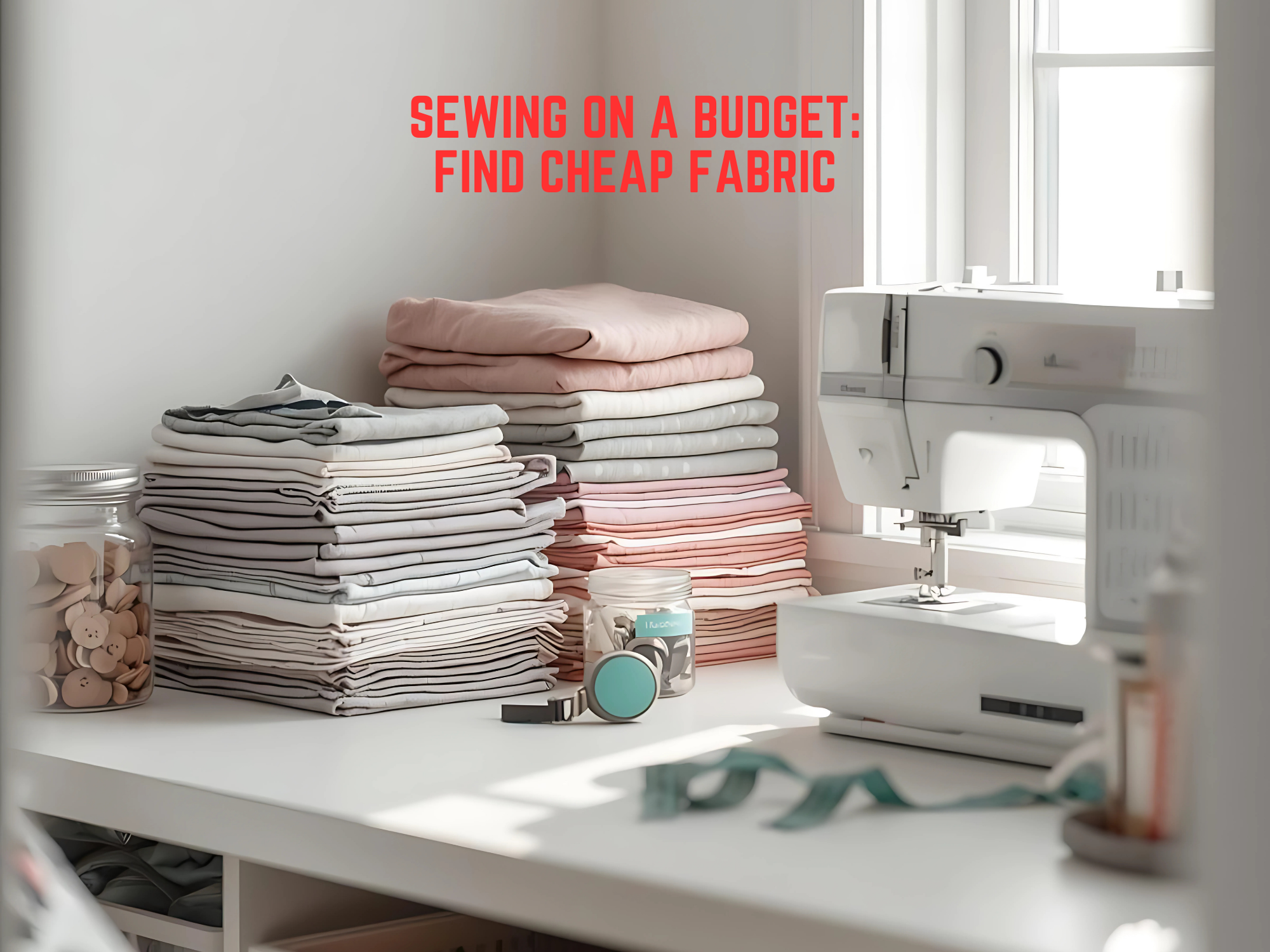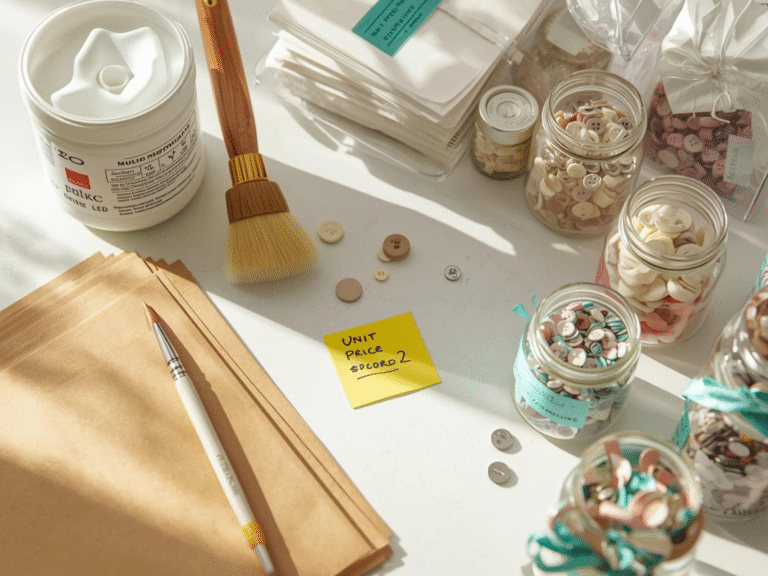Sewing is a joy. It can also feel pricey. Sometimes the cost of fabric, tools, and thread adds up fast. I have felt that pinch too. The good news is you can do affordable sewing with a few smart habits. In this guide, I share simple, beginner friendly steps to lower your costs while still making work you are proud of.
I will show you where to buy cheap fabric, how to choose a low cost sewing machine, and how to reuse zippers, buttons, and elastic. These tips help both beginners and experienced sewists stay on track and save money.
Why Sewing Feels Expensive
When you start a project, the bill can grow. Fabric, thread, needles, interfacing, and trims can cost more than a ready made item. That is normal. Stores mark up new yardage and tools. The trick is to plan your project, set a budget, and shop in smarter places. If you want a deeper system for money saving habits, read our guide Budget-Friendly Crafting: Make More, Spend Less.
Start With the Right Machine
You do not need a fancy model with hundreds of stitches. A simple, basic machine can handle most projects. If your budget is tight, look for a reliable beginner model or a used machine in good shape. The Spruce shares tested picks for beginner machines, which helps you see what features matter and what you can skip.
Buying used can save a lot. When you shop secondhand, bring a scrap of fabric, plug in the machine, and test straight and zigzag stitches. Listen for a smooth sound. Check that you get the foot pedal, power cord, and bobbin case. If you want a quick checklist of what to look for and common fixes, see this basic machine troubleshooting guide from The Spruce Crafts.
Where to Get Cheap Fabric In Person
Local thrifts and reuse shops are gold. Look for sheets, duvet covers, tablecloths, and curtains. These give you large cuts at a tiny price. Many towns also have creative reuse stores that sell donated yardage.
Here are a few cheap places to buy fabric that often beat big box prices:
- Fabric reuse and thrift shops with low prices per yard, like $4 to $5. Examples include Nacho Ann’s Fabrics and Paper City Fabrics. Both offer thrifted yardage at set per yard pricing.
- IKEA textiles. Look for pre cut cottons and sturdy home textiles. Curtains and duvet covers make great yardage for bags, aprons, and home decor.
When you bring home thrifted textiles, wash and dry them first. This helps remove odors and pre shrinks the fabric.
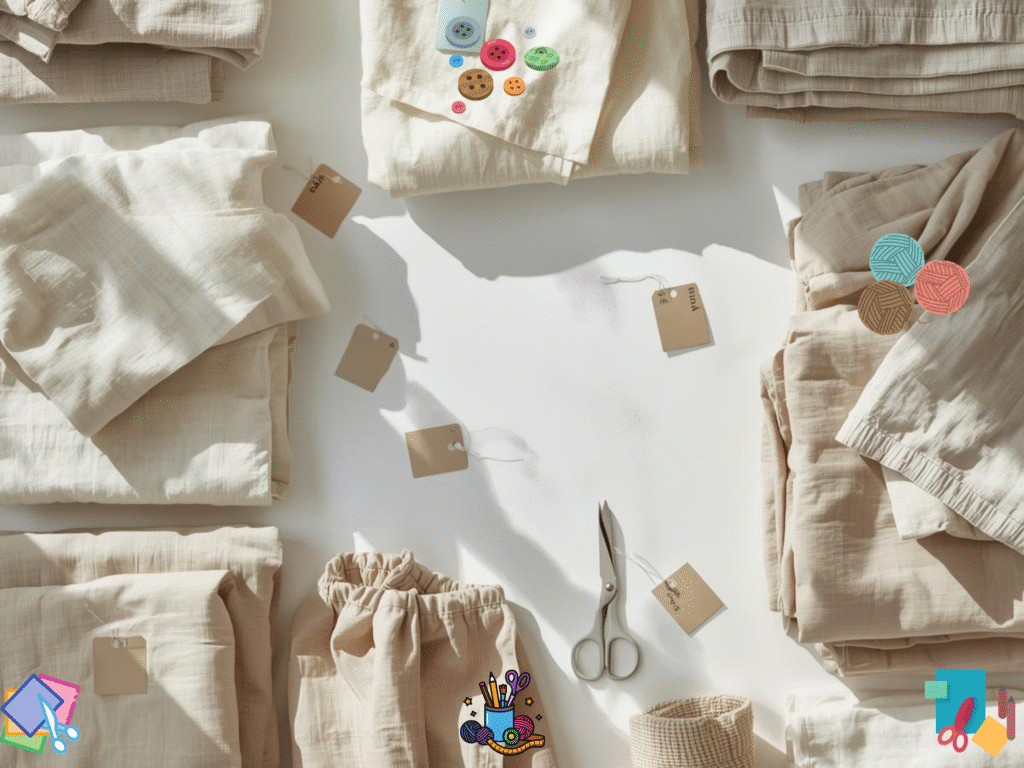
Where to Buy Cheap Fabric Online
If you prefer to shop from home, try these sources for cheap fabric online:
- Discount fashion fabric shops. Fabric Mart runs deep sales on designer cuts, end lots, and mystery bundles.
- Clearance sections at big retailers. Check Walmart’s fabric clearance pages for bolts, precuts, and quilting cottons marked down. Prices change often, so bookmark the page and check back.
- Deadstock and secondhand sources. A Thrifty Notion and Swanson’s Fabrics offer rescued, vintage, or deadstock fabric at budget prices.
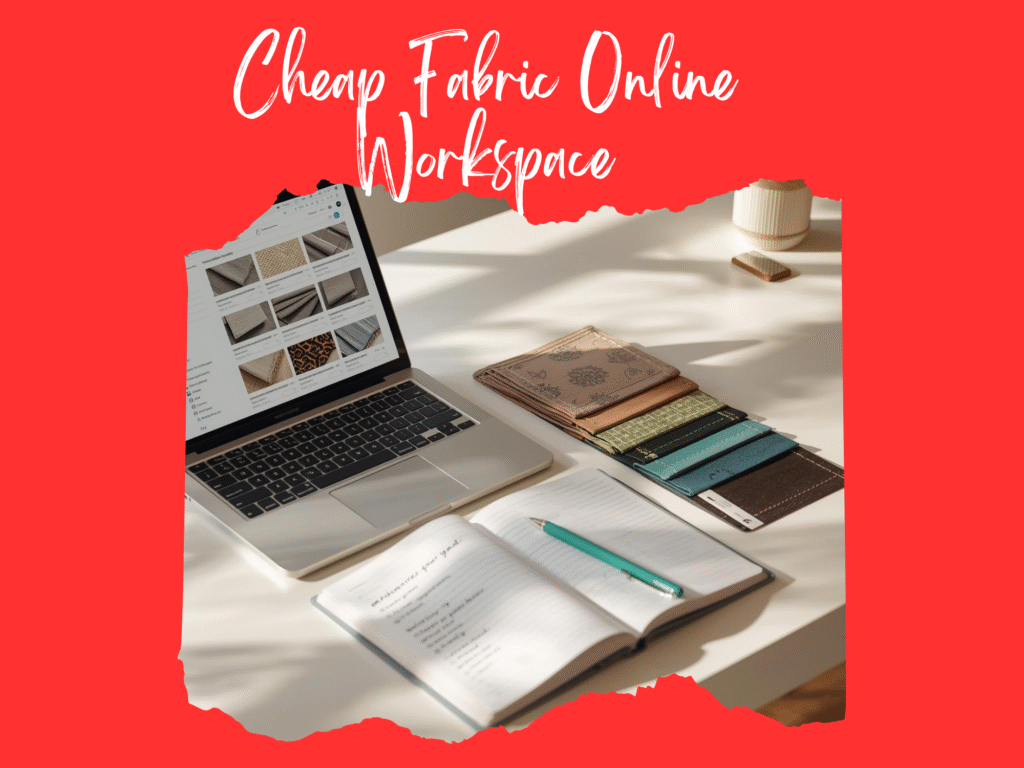
These are great spots when you ask yourself where to get cheap fabric without leaving your house. I like to sort by fiber, weight, and price. I also order swatches when offered for tricky fabrics.
How to Shop Clearance Like a Pro
Clearance is your friend, but only if you plan. Here is a quick method.
- Make a short list of your most used fabrics. For many sewists, that is cotton, cotton blends, denim, and fleece.
- Check clearance pages once a week. Add items under your max price to your cart.
- Read the fabric weight and width. For clothing, look for 54 inches wide or more when possible.
- Buy enough for the largest piece you sew most. For a simple skirt or pillow set, 2 to 3 yards is safe.
- Stick to your budget.
For a simple system that keeps your stash neat and easy to grab, try our Craft Storage Ideas. It shows low cost bins and labels that work in tight spaces.
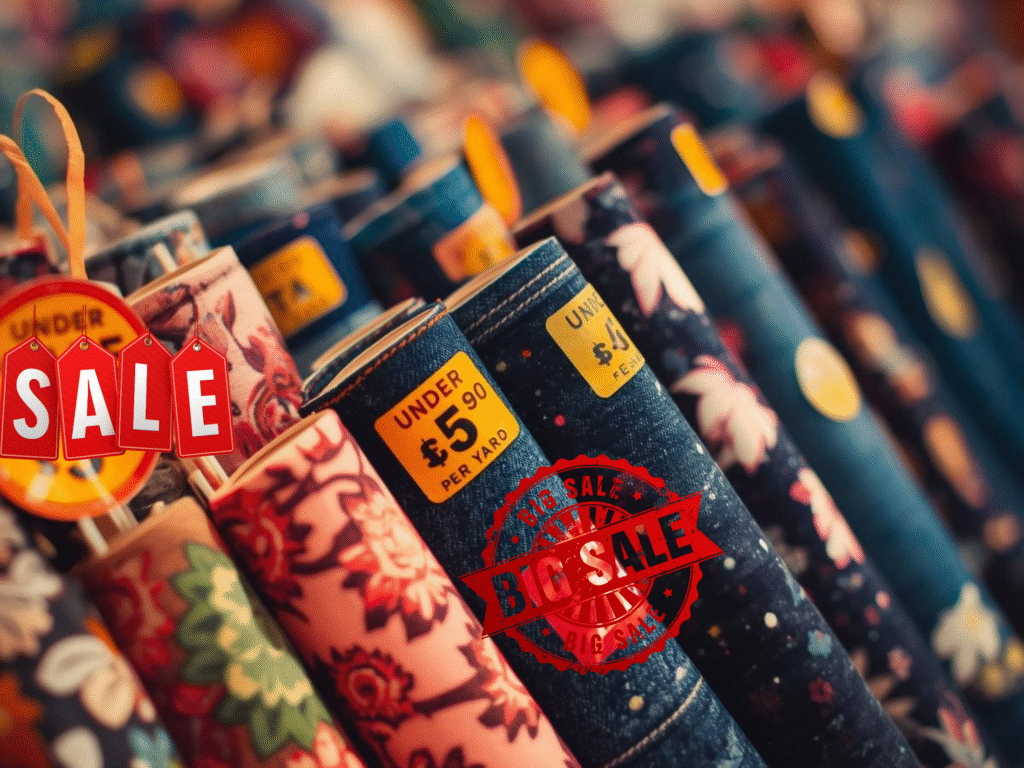
Reuse Notions and Save
Notions add cost fast. You can lower that cost by harvesting from old clothes and bags.
- Zippers. Remove with a seam ripper, trim thread, and save by size.
- Buttons. Snip with a small scissor kit into a jar. Sort by color or hole count.
- Elastic and hardware. Test stretch and strength. Keep the best pieces only.
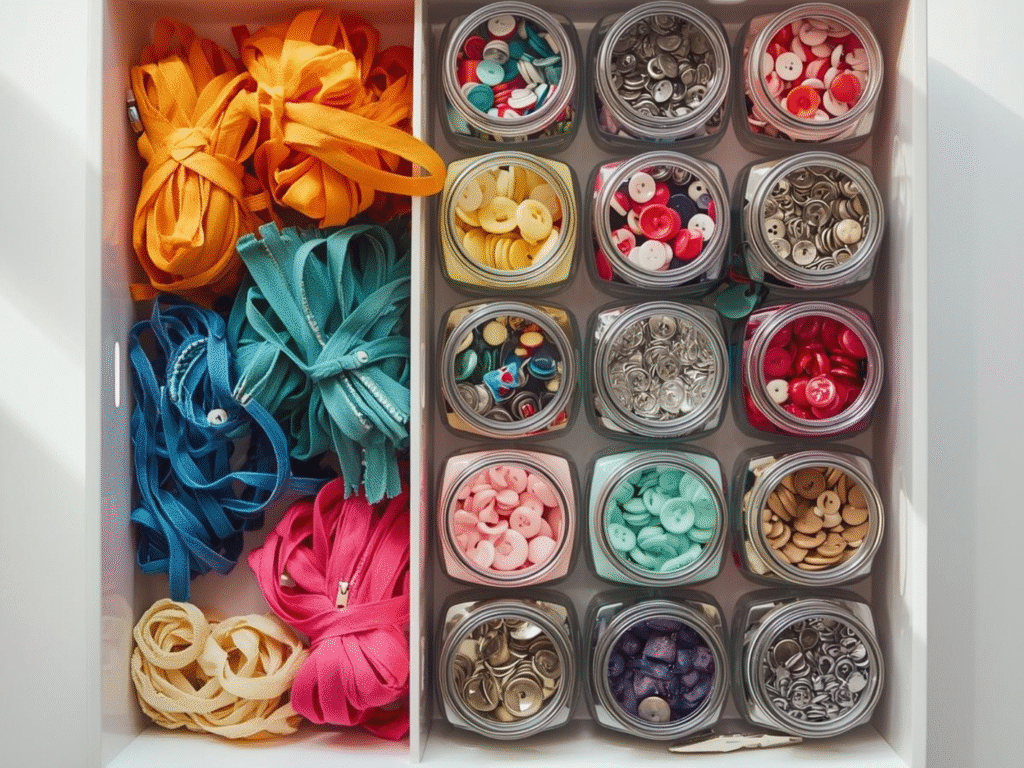
Keep a small tin for these parts near your machine. When you start a project, shop your tin first. This one habit can save several dollars per make.
Upcycle Fabric From Your Closet
Look at clothes that no longer fit or items with stains in hidden areas. A men’s XXL shirt can become a child’s dress or a set of fat quarters. A denim skirt can become a tote base. Bedding makes perfect quilt backs. Wash, press, and cut with a plan. If you need time saving steps for cutting and batching, use our guide on Batch Crafting Techniques.
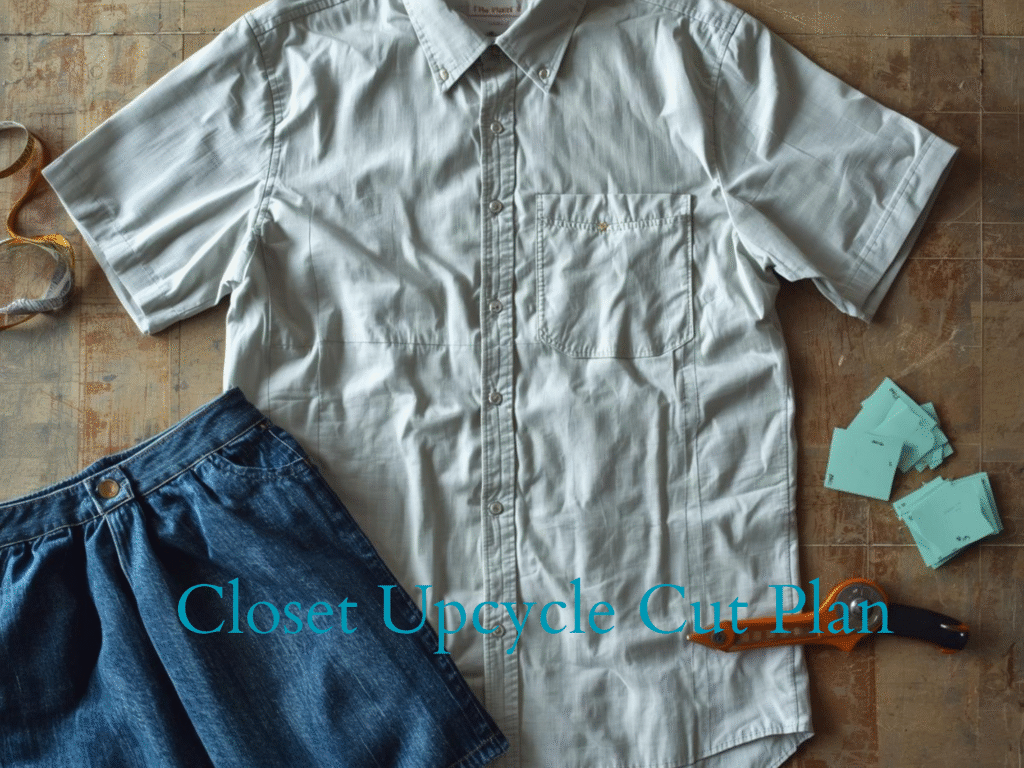
Build a Simple Budget Kit
A small kit helps you keep costs low.
- One clear zipper pouch
- A mini spending log
- A fabric swatch card for colors you sew most
- A list of your max prices by fabric type
For more help with low cost tool choices and set ups, see our guide DIY Tools on a Budget.
Quick Tips for Thrifted Machines
If you decide to buy used, these steps help you avoid a bad pick.
- Test the light, pedal, and both stitches.
- Open the bobbin area. Check for rust or missing parts.
- Ask for the manual or look it up online by model number.
- If the price is high, ask for extra needles, bobbins, or feet to be included.
- Plan for a basic tune up if the machine sat for years.
For more context on what features matter for starters, compare notes with The Spruce’s beginner machine overview. It gives you a sense of the stitch range and feet you will actually use.
Stretch Every Yard
When yardage is limited, smart cutting helps.
- Cut all small pieces from leftovers first.
- Piece facings and pocket bags from scraps.
- Use bias only when needed.
- Try contrast bindings from thin leftover strips.
- Save offcuts by color in gallon bags for patch pockets and appliqués.
If you keep your sewing space tidy and your scraps sorted, you will reach for them more. Our readers love the simple ideas in DIY and Crafts on a Budget: Shop Your Home First.
Put It All Together
You started this post because you want to sew more for less. Now you know where to buy cheap fabric, how to spot cheap fabric stores, and how to find cheap fabric online that still works well. You also have simple ways to reuse zippers and buttons, and you have a plan for machines that fits your budget. This is real sewing on a budget you can keep up all year.
When you try these steps, you will feel the cost pressure drop. Your stash will serve your projects. Your tools will match your needs. Most importantly, you will keep sewing.
Keep learning with our Crafting on a Budget posts at Trusti ASG. We update these guides often with new ideas and links that help you save. Start here: Crafting on a Budget.
Free Find Cheap Fabric Planner
Download the free, easy-to-use template in the link below to make life a little easier for you as you start your fast crafting journey:
Final Word
If you remember one thing, make it this. Cheap does not mean low quality. It means smart choices. Shop reuse first, buy clearance with a plan, and use what you have. With these habits, cheap fabric becomes a pathway to beautiful, budget friendly makes.

